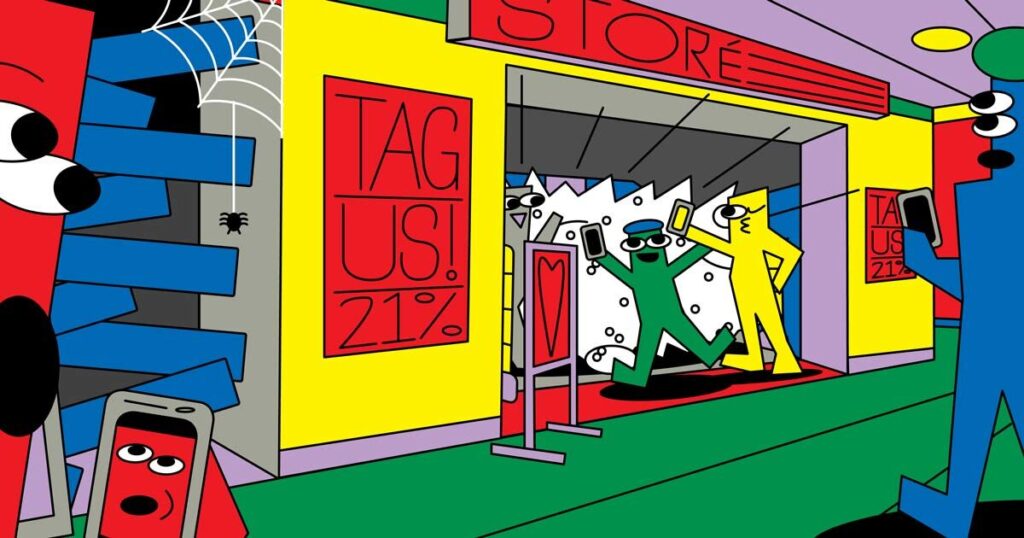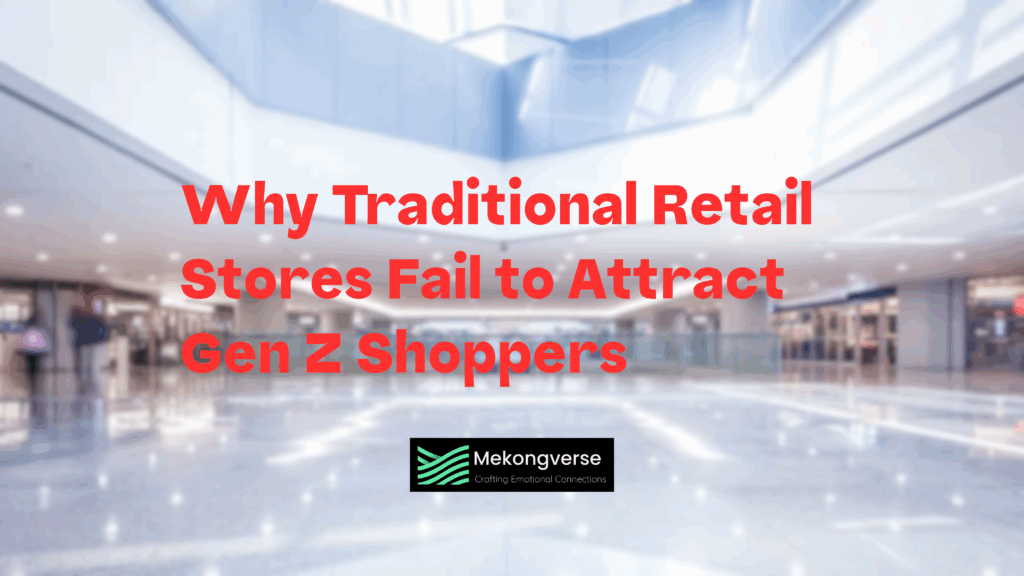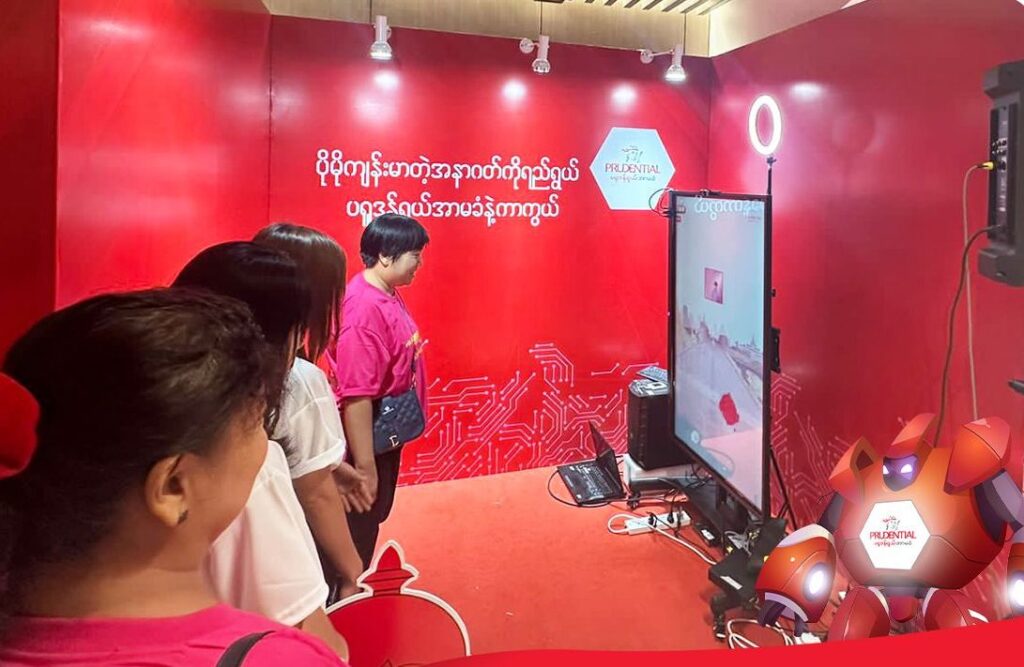The generational shift is here—and retail is in crisis. Traditional stores, once the beating heart of the shopping experience, are struggling to get even a second glance from Gen Z. Despite sprawling square footage and legacy brand names, many retail environments now feel outdated, uninspiring, and disconnected from the values of today’s youngest consumers.
This generational disinterest isn’t a passing phase. It’s a loud and clear signal that modern retail problems are deeply rooted in a lack of innovation, engagement, and authenticity. Gen Z, born between 1997 and 2012, are digital natives with high expectations. And here’s the truth: your old-school retail setup doesn’t impress them.
Who Are Gen Z Shoppers and What Do They Value?
To understand why Gen Z is abandoning traditional retail, we need to understand who they are. Gen Z shoppers aren’t just younger millennials. They are:
- Hyper-connected: Raised with smartphones, social media, and streaming.
- Value-conscious: They care about sustainability, inclusivity, and transparency.
- Experience-driven: Gen Z seeks immersive and emotional connections with brands.
- Highly visual: Influenced by platforms like Instagram and TikTok, where aesthetics reign supreme.
This group doesn’t just shop—they interact, compare, review, and share every aspect of the experience. If your store doesn’t cater to that, it simply doesn’t exist in their world.
The Digital-First Mentality of Gen Z
Gen Z has never known a world without Wi-Fi. Their shopping journey starts online—even when it ends in a physical store. They Google, scroll, compare, and review. Physical stores often miss this first touchpoint, offering a disconnected journey that feels jarring. Instead, stores must blend digital and physical experiences seamlessly.

Why Gen Z Won’t Wait—They Want It Now
The expectation for instant gratification is baked into Gen Z’s habits. Whether it’s 2-hour delivery or 10-second TikTok videos, this generation doesn’t want to wait. Traditional retail—with its slow service, long lines, and outdated inventory systems—feels painfully sluggish by comparison.
Shopping With Their Eyes: Gen Z and Visual Culture
Gen Z shops through visuals. Think Pinterest boards, TikTok hauls, and YouTube try-on videos. Yet, most retail environments still rely on racks and shelves. That doesn’t cut it anymore. Gen Z wants to see how it looks, how it feels, how it fits—without needing to try it on.
The “Boring Store” Problem
Let’s be blunt: Most stores are boring. Neutral lighting, generic layouts, and lack of interaction make Gen Z walk out faster than they walked in. They don’t just want to browse. They want to explore, play, and share. This is why experiential retail is not a trend—it’s a necessity.
Gen Z Shops for Stories, Not Stuff
It’s not about the product—it’s about the story behind it. Gen Z is more likely to support a brand that tells a meaningful, authentic story. Products are secondary to purpose and emotion. If your retail store can’t express that, you’ve already lost their interest.
TikTok Made Me Buy It: The Power of Peer Influence
Social proof is everything. Gen Z wants to see their peers using, loving, and reviewing products. Without this layer of validation, trust is hard to earn. Traditional retail stores often lack the digital tools to integrate this influence into the shopping experience.
Conscious Consumerism: Why Ethics Matter More Than Ever
Gen Z doesn’t just buy—they investigate. Where was it made? What’s the carbon footprint? Does the brand stand for something? Retailers who ignore ethical transparency find themselves ghosted by younger consumers.
Why Fragmented Retail Experiences Drive Gen Z Away
Omnichannel isn’t optional—it’s essential. If your app doesn’t sync with your in-store inventory or your website isn’t mobile-optimized, Gen Z notices. They demand fluid transitions between physical and digital, and they remember when brands fall short.
Gen Z Wants to Feel Seen
Personalization matters more than ever. Gen Z expects stores to know their preferences, recommend what they’ll love, and offer personalized, not generic, experiences. And no, using their name in an email doesn’t count anymore.
Why Static Stores Repel Dynamic Shoppers
Imagine walking into a store and feeling like you’ve traveled back in time. That’s what most retail feels like to Gen Z. They want interactive displays, immersive content, and tech-forward features that reflect their reality.
Edutainment & Retailtainment: Where Are They?
Retail should feel like a concert, a game, or an interactive museum—not a chore. Gen Z craves environments where they can learn, play, and share. Stores must evolve into destinations, not just places to shop.
Gen Z Can Smell Inauthenticity
Fake brand voices? Staged diversity? Performative activism? Gen Z will call it out. If your store’s messaging doesn’t align with real values, they’ll walk away—permanently.
If It’s Not Mobile-Optimized, It’s Invisible
For Gen Z, mobile is the remote control of their world. From browsing to payments, everything happens on the phone. Your store’s ecosystem must be mobile-integrated from end to end.
The Role of Radical Transparency in Modern Retail
Being open about sourcing, pricing, and sustainability builds trust. Gen Z doesn’t expect perfection—but they expect honesty. If they can’t find information, they assume the worst.
What Makes AR Mirrors Magnetic for Gen Z
Here’s where things get exciting. AR mirrors meet Gen Z on their terms: visual, interactive, and tech-driven. These smart mirrors offer:
- Virtual try-ons
- Real-time customization
- Instagrammable moments
- Data-powered personalization
In short, they turn shopping into an experience.
What Is an AR Mirror?
An Augmented Reality Mirror is a digital display that acts like a regular mirror but overlays virtual garments, makeup, or accessories. Think Snapchat filters, but in your favorite fashion store.
How MekongVerse AR Mirror for Retail Solves Gen Z Pain Points
MekongVerse isn’t just another AR solution. Their AR Mirror for Retail:
- Reduces friction by letting shoppers try before they buy.
- Helps brands deliver personalized styling in real time.
- Makes stores Instagram-friendly with high shareability.
- Lowers return rates with accurate virtual fittings.
Virtual Try-Ons and Reduced Purchase Anxiety
Trying on clothes digitally means Gen Z can experiment without hassle. It cuts back on decision fatigue and returns—two major turn-offs for this audience.
Gamifying Fashion for a Gen Z Audience
Filters, color swaps, instant styling—these features gamify shopping. Gen Z loves it because it feels like play, not pressure.
Social Media Integration and Shareability
MekongVerse’s AR mirror lets users snap, post, and share their try-ons instantly. It’s like giving your store a built-in TikTok studio.
Using AI + AR to Deliver Tailored Retail Moments
AI helps recommend outfits based on user preferences. Combined with AR, the result is a personalized fashion journey in real time.
How AR Mirrors Help Reduce Friction and Waste
By helping customers make confident decisions, AR mirrors minimize returns—good for business and the planet.
Turning Retail Spaces Into Interactive Experiences
The store becomes a stage. Gen Z becomes the main character. The result? More foot traffic, more dwell time, and more sales.
How AR Tech Builds Relationships with Gen Z
It’s not just about selling—it’s about connecting. AR mirrors create a fun, memorable, and emotionally resonant interaction that builds loyalty.
Converting Attention into Action Through AR
Engagement leads to exploration, which leads to purchases. AR mirrors bridge the gap between browsing and buying.
Why Every Store Needs to Think Like a Digital Brand
To survive the next decade, retailers must think like tech companies. AR isn’t optional—it’s the bridge to the future of retail.
FAQs
Why is Gen Z avoiding traditional retail stores?
Because most stores lack engagement, personalization, and digital integration that align with Gen Z’s lifestyle.
What is the biggest shopping preference of Gen Z?
They prefer personalized, visual, and interactive shopping experiences—online or in-store.
How can AR mirrors help retailers attract Gen Z?
They enhance personalization, gamify shopping, and integrate with social media—essential for Gen Z appeal.
Are AR mirrors expensive to implement?
Solutions like MekongVerse offer scalable AR mirror technology that’s accessible to mid-sized and large retailers.
Does AR mirror technology improve sales?
Yes, it reduces return rates, increases dwell time, and boosts customer confidence in purchases.
Where can I learn more about AR mirrors for retail?
Visit MekongVerse AR Mirror for Retail for detailed features and demos.
Conclusion: How Retailers Can Win Over Gen Z
Retail’s survival depends on one thing: evolving with the customer. Gen Z doesn’t want more products—they want more experiences. AR mirrors like those from MekongVerse represent the perfect intersection of tech, fashion, and human connection. If your store isn’t interactive, immersive, and Instagrammable, it’s invisible.
Now is the time to adapt—or be left behind.



